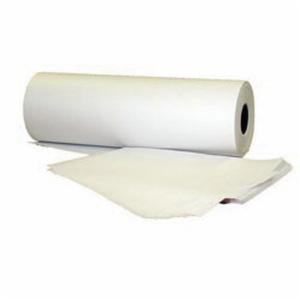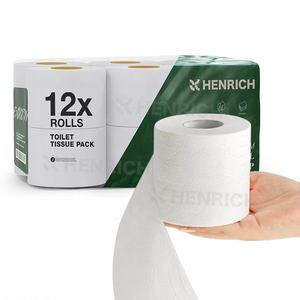toilet paper is an essential item in every household, and when it comes to choosing the right type, 1-ply toilet paper stands out as a popular choice for many. In this comprehensive guide, we will explore everything you need to know about 1-ply toilet paper, from its unique characteristics to its environmental impact and future trends. Whether you are a budget-conscious consumer or simply curious about the world of toilet paper, this guide has got you covered.
Different Types of 1-Ply toilet roll

Single vs. Double Roll Packaging
When shopping for 1-ply toilet paper, you may come across single and double roll packaging options. Single rolls contain one continuous sheet of 1-ply toilet paper, while double rolls have twice the amount of paper wound onto a single roll. While double rolls may seem more cost-effective at first glance, it’s essential to consider your usage patterns and storage space before making a decision.
Recycled vs. Virgin Paper
Another consideration when choosing 1-ply toilet paper is whether to opt for recycled or virgin paper. Recycled paper is made from post-consumer waste, making it a more eco-friendly choice. On the other hand, virgin paper is manufactured directly from wood pulp. By selecting recycled 1-ply toilet paper, you can contribute to sustainable practices and reduce your environmental footprint.
- Single Roll Packaging
- Double Roll Packaging
Advantages and Disadvantages of Using 1-Ply Toilet Roll

Advantages
- Cost-Effectiveness: 1-ply toilet paper is known for its affordability, making it an excellent choice for budget-conscious consumers.
- Thinness and Discretion: The thin nature of 1-ply toilet paper allows for easy storage in small spaces and discreet use.
- Flushability: 1-ply toilet paper tends to break down more easily in water, making it suitable for septic systems and reducing the risk of clogs.
Disadvantages
- Less Absorbent: Compared to multi-ply options, 1-ply toilet paper may be less absorbent and require the use of more sheets per use.
- Potential for Breakage: The single-layer construction of 1-ply toilet paper can lead to tearing or breakage during use, requiring careful handling.
- Perception of Lower Quality: Some individuals may perceive 1-ply toilet paper as lower quality compared to thicker varieties, affecting their overall satisfaction.
| Advantages | Disadvantages |
|---|---|
| Cost-Effectiveness | Less Absorbent |
| Thinness and Discretion | Potential for Breakage |
| Flushability | Perception of Lower Quality |
Choosing the Right 1 ply toilet roll for Your Needs

When selecting a 1-ply toilet roll for your home or business, consider factors such as ply thickness, sheet size, and overall quality. Look for options that meet your preferences in terms of softness, strength, and environmental sustainability. Additionally, pay attention to packaging sizes and quantity to ensure that you have an adequate supply on hand.
Factors to Consider:
- Ply Thickness: Choose a 1-ply toilet roll that strikes the right balance between thickness and durability for your needs.
- Sheet Size: Opt for sheets that are large enough to provide effective coverage while minimizing wastage.
- Quality: Select a reputable brand known for producing high-quality 1-ply toilet paper that meets your expectations.
Cost Comparison: 1 Ply Toilet Roll vs. Other Plys
When comparing the cost of 1-ply toilet paper to other ply options, it’s essential to consider factors beyond the initial price. While 1-ply toilet paper may be more economical upfront, you may end up using more sheets per use, potentially offsetting the cost savings. Evaluate your usage habits, comfort preferences, and overall satisfaction to determine the best value for your money.
Cost Comparison Table:
| Type of Toilet Paper | Cost per Roll | Number of Sheets | Cost per Sheet |
|---|---|---|---|
| 1-Ply | $0.50 | 500 | $0.001 |
| 2-Ply | $0.75 | 400 | $0.002 |
| 3-Ply | $1.00 | 300 | $0.003 |
In the above table, we can see that while 1-ply toilet paper has the lowest cost per roll, its cost per sheet is significantly lower compared to 2-ply and 3-ply options.
How to Get the Most Out of Your 1 Ply Toilet Roll
To maximize the efficiency and lifespan of your 1-ply toilet roll, consider the following tips:
- Use Only What You Need: Avoid excessive use of toilet paper by tearing off only as much as necessary for each use.
- Opt for High-Quality Brands: Choose reputable brands that offer durable and absorbent 1-ply toilet paper for optimal performance.
- Proper Storage: Store your 1-ply toilet paper in a cool, dry place to maintain its quality and prevent moisture damage.
By adopting these practices, you can make the most out of your 1-ply toilet roll and ensure a satisfactory user experience.
Creative Uses for 1 Ply Toilet Roll
While primarily designed for personal hygiene purposes, 1-ply toilet paper can also serve various creative and practical functions:
- Arts and Crafts: Use 1-ply toilet paper for art projects, such as papier-mâché or textured collages.
- Household Cleaning: Utilize 1-ply toilet paper for light cleaning tasks, such as dusting surfaces or wiping up spills.
- Emergency Supplies: Keep a stash of 1-ply toilet paper for emergencies, such as makeshift bandages or fire starter kindling.
With a bit of imagination, 1-ply toilet paper can become a versatile tool in your everyday life beyond its conventional use.
Environmental Impact of 1 Ply Toilet Roll
As with all paper products, 1-ply toilet roll production can have environmental consequences, including deforestation, water usage, and carbon emissions. To mitigate these impacts, consider choosing recycled 1-ply toilet paper made from post-consumer waste. Additionally, look for certifications such as FSC (Forest Stewardship Council) to ensure that the paper comes from responsibly managed sources.
Environmental Impact Statistics:
- Each year, millions of trees are cut down to produce toilet paper, contributing to deforestation.
- The water-intensive process of paper production can strain local water sources and ecosystems.
- Carbon emissions from transportation and manufacturing further exacerbate the environmental footprint of 1-ply toilet roll.
By opting for eco-friendly options and practicing responsible consumption, you can minimize the environmental impact of your toilet paper usage.
Hygiene Considerations with 1 Ply Toilet Roll
Maintaining proper hygiene when using 1-ply toilet roll is essential to prevent contamination and promote cleanliness. Follow these hygiene tips for optimal sanitation:
- Proper Handwashing: Always wash your hands thoroughly after using toilet paper to remove any bacteria or germs.
- Avoid Cross-Contamination: Store your 1-ply toilet roll in a clean, dry area away from potential sources of contamination.
- Dispose of Used Paper Properly: Ensure that used toilet paper is disposed of in a sanitary manner to prevent the spread of pathogens.
By incorporating these hygiene practices into your toilet paper routine, you can uphold high standards of cleanliness and protect your health.
Trends in 1 Ply Toilet Roll Usage
The usage of 1-ply toilet roll has evolved over time, reflecting changing consumer preferences and industry innovations. Some notable trends in 1-ply toilet paper usage include:
- Sustainable Packaging: Manufacturers are increasingly adopting eco-friendly packaging materials for 1-ply toilet roll to appeal to environmentally conscious consumers.
- Customized Options: Brands are offering personalized prints and embossing on 1-ply toilet paper to enhance aesthetics and customer engagement.
- Subscription Services: Subscription-based delivery services for 1-ply toilet paper are gaining popularity, providing convenience and regular supply to consumers.
These trends signal a shift towards more sustainable, personalized, and convenient solutions in the realm of toilet paper products.
Future of 1 Ply Toilet Roll
Looking ahead, the future of 1-ply toilet roll is likely to be shaped by advancements in sustainability, technology, and consumer demands. Innovations in eco-friendly materials, packaging designs, and production processes will drive the evolution of 1-ply toilet paper towards greater efficiency and environmental responsibility. As consumers become more mindful of their ecological footprint, we can expect to see a continued emphasis on sustainable practices and product transparency in the 1-ply toilet roll industry.
Conclusion
In conclusion, 1-ply toilet paper offers a range of benefits, from cost-effectiveness to versatility in usage. By understanding the different types of 1-ply toilet roll available, weighing the advantages and disadvantages, and considering factors such as cost, quality, and environmental impact, you can make informed choices for your personal hygiene needs. With a combination of practical tips, creative ideas, and a commitment to sustainability, you can enhance your toilet paper experience while contributing to a cleaner, greener future. So, next time you reach for a roll of 1-ply toilet paper, remember the wealth of possibilities it holds beyond its humble origins in the bathroom.